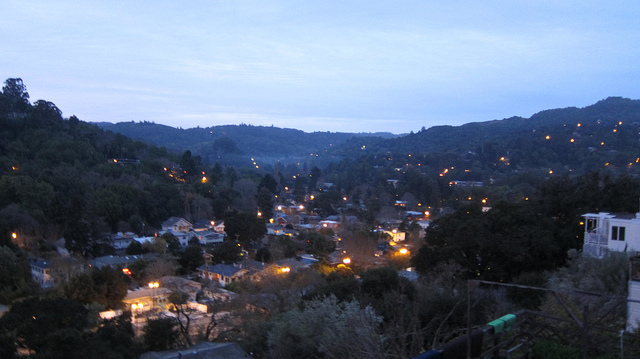 About 16 years ago, I was excited to be a newly-minted Drake High freshman and Fairfax was excited to start on a major update to its General Plan. Three months ago I celebrated my 30th and Fairfax celebrated the passage of the final piece of its general plan update. But last month, the town started to undo its work, and the most substantive part of the General Plan – its zoning and housing elements – are under threat.
About 16 years ago, I was excited to be a newly-minted Drake High freshman and Fairfax was excited to start on a major update to its General Plan. Three months ago I celebrated my 30th and Fairfax celebrated the passage of the final piece of its general plan update. But last month, the town started to undo its work, and the most substantive part of the General Plan – its zoning and housing elements – are under threat.
These elements are separate but connected pieces. The zoning element is something I neglected to praise when it was first revealed in 2012. It rezones all highway commercial zones as downtown commercial, a dramatic step away from the auto-centric design that defines Sir Francis Drake and Center. It also adds scatters in three Planned Development Districts to accommodate specialized developments: one at Christ Lutheran Church for 40 units of senior housing; one at 10 Olema Road for 22 small, single-family homes; and one at School Street Plaza for 9 homes mixed with commercial space.
Built atop the zoning element is the first state-approved housing element in over a decade. It puts Fairfax in compliance with state law regarding affordable housing, allowing it to avoid writing another housing element for 8 years. The element also allows second units (a major goal of anti-development activists), home sharing, and other non-traditional affordable home formats.
Unfortunately, the zoning element suffered from typos and inconsistencies between its tables and the actual policy text and maps. Though Fairfax’s legal counsel and planning staff assured the public and the council that the typos were not a problem, project opponents alleged the typos opened up dozens of other properties for development. Led by former councilmember Frank Egger, the opponents drew up a ballot initiative to withdraw zoning. That would have the housing element out of compliance with state law and put the town back to Square One.
Opponents relied upon this falsehood to sell their initiative and gathered 1,000 signatures, which they submitted the afternoon before the town council was scheduled to vote on addressing the typos the initiative was intended to address. That locked the zoning from any changes and prevented the council from fixing the problems opponents complained about.
While opponents claim they had no idea this would lock the zoning, it strains credulity that a former mayor and a coterie of old political hands wouldn’t know that legislation that’s the subject of a ballot initiative is locked down.
Yet rather than face a ballot fight and further divide the town, the council decided in a 3-2 vote in May to start the process to rescind the zoning themselves. Mayor David Weinsoff, one of the votes to keep the zoning, said the town was capitulating to bullies.
The vote to rescind is bad policy, an attempt to find a compromise with opponents who refuse to work with the council. If they were concerned about typos, they would have submitted their signatures after the council had a chance to change them, not before. If they were concerned about the content of the General Plan, they had 16 years of public process to voice them.
The rezoning is the most progressive step by any town in Marin
As I’ve said before, the guiding light of this blog’s view that the beauty and livability of its town centers are at the heart of what makes Marin’s towns great. The policy under threat, to allow Fairfax’s downtown to grow into areas where it has not been, fits hand in hand with that understanding.
While other towns have decided to innovate and create standalone developments in driving strips, or to create driving-oriented developments on their fringes, Fairfax decided to invest in its downtown. It’s a recognition that what makes Fairfax great isn’t its parking lots on Center; it’s the shops and homes Bolinas.
Pursuing affordable housing in a way that doesn’t just fit with Fairfax’s character but is inspired by the physical and spiritual heart of town is the only way to turn the lemons of affordable housing mandates into lemonade.
Coalition for a Livable Marin has launched a petition asking the council to stop the process of rescinding the zoning. The coalition's steering committee, of which I am a member, believes the decision to rescind the zoning is bad for the town. Not only does it spit in the face of downtown, essentially saying it’s an aberration that shouldn’t be replicated, but it puts in jeopardy 71 affordable housing units.
It puts Fairfax on a path toward legal confrontation with California, as the zoning underpins the already-certified Housing Element. And it undoes possibly the most promising reform of second unit policy in the county, setting back a key goal of both affordable housing proponents and the anti-development party.
What the council is doing runs counter to its history as the funky, progressive place we know it as. Fairfax should keep its zoning.